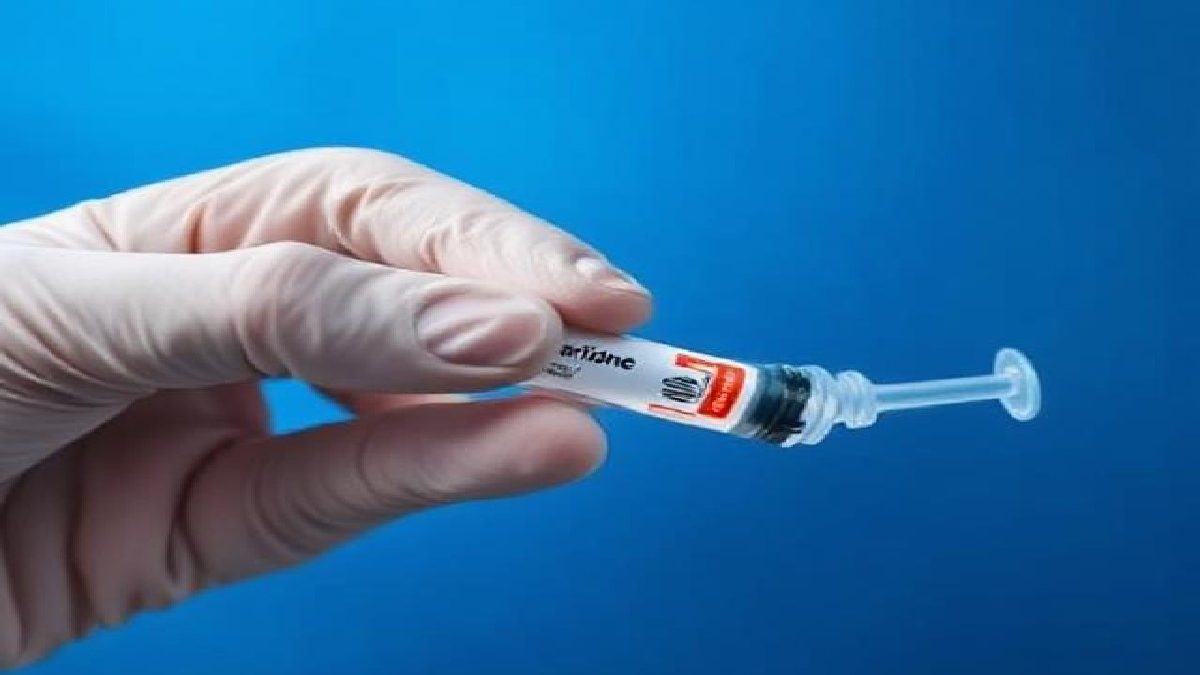Introduction
Welcome, friends! Today, I want to talk about a medicine called Ceftriaxone Injection uses in hindi. If you have ever wondered about its uses in Hindi or how it can help fight infections, you have come to the right place. I will explain everything in simple English while ensuring that you will understand even if you have never dealt with medical terms before.
In this article, I break down Ceftriaxone, how it works, and its many uses. I also share some practical examples from real-life situations. Let’s dive in and see why this antibiotic is so crucial in hospitals and clinics in India and worldwide.
What is Ceftriaxone?

Ceftriaxone is a broad-spectrum antibiotic belonging to the beta-lactam family, specifically to the cephalosporin class. This medicine is used to fight against many types of bacteria that cause infections.
In simple words, think of Ceftriaxone as a shield. It protects you from the harmful effects of bacteria. Doctors often use this injection to treat severe infections affecting different body parts, such as the lungs, skin, and urinary tract.
And also When you hear the term “injection,” remember it means the medicine is given directly into your body, usually into a muscle or vein. It is done so that the medicine works quickly and efficiently.
How Does Ceftriaxone Work?
Ceftriaxone works by interfering with the bacteria’ process to build their cell walls. Without a proper cell wall, bacteria cannot survive. Here’s how it breaks down.
Stops Cell Wall Formation: Bacteria have walls that give them strength. Ceftriaxone prevents them from building these walls.
Leads to Bacterial Death: Once the bacteria lose their wall structure, they become weak and die.
This makes Ceftriaxone effective against many bacteria, which is why it is considered a broad-spectrum antibiotic.
Imagine trying to build a house without bricks or mortar. Without these building blocks, the house will collapse. Similarly, bacteria collapse without a proper cell wall, which is why Ceftriaxone helps treat infections.
Detailed Look at Each Use
Let’s look at how Ceftriaxone works for each type of Infection mentioned above.
- Respiratory Infections
What Happens?
When you get a respiratory infection like pneumonia or bronchitis, bacteria invade your lungs. This causes symptoms such as cough, fever, and difficulty breathing.
How Ceftriaxone Helps:
The injection fights bacteria quickly. It stops their growth and kills them, allowing your lungs to heal faster.
Practical Thought:
Have you ever struggled to breathe properly on a cold winter day? Imagine how hard it is when the lungs are infected. Ceftriaxone helps ease these frustrations by providing a fast-acting remedy.
2. Skin and Soft Tissue Infections
What Happens?
Infections on the skin, like infected wounds or abscesses, can become serious if not treated promptly.
How Ceftriaxone Helps:
The medicine penetrates deep into infected tissues and kills the bacteria, reducing inflammation and preventing Infection from spreading.
3. Urinary Tract Infections (UTIs)
What Happens?
UTIs cause pain, frequent urination, and sometimes high fever. These infections occur when bacteria enter the urinary tract.
How Ceftriaxone Helps:
By administering the injection, doctors can quickly reduce the bacteria count in the urinary system, relieving discomfort and preventing further complications.
Practical Thought:
Imagine not being able to sleep well because of urgency and pain. Ceftriaxone can be a fast solution, letting you return to your routine.
4. Meningitis
What Happens?
Meningitis is an infection of the membranes surrounding the brain and spinal cord. It is a severe condition with rapid onset.
How Ceftriaxone Helps:
For meningitis, quick action is critical. Given as a high-dose injection, Ceftriaxone works rapidly to combat the bacteria, providing life-saving relief.
Practical Thought:
Have you listened to alarming stories of meningitis? It is a reminder of how quickly conditions can turn severe. Medical professionals use Ceftriaxone because it can act quickly in emergencies.
5.Highly Sensitive Bacterial Infections
What Happens?
Some bacteria are more vulnerable to certain antibiotics. Ceftriaxone works wonders against these sensitive bacteria, ensuring that even the most challenging infections can be controlled.
How Ceftriaxone Helps:
With its broad-spectrum capabilities, Ceftriaxone covers many bacteria, making it a go-to option when the specific bacteria have not been identified yet.
Practical Thought:
Consider that feeling of uncertainty when you’re sick and don’t know precisely what is causing your symptoms. Ceftriaxone provides a blanket protection that removes some of that worry by effectively fighting off the bacteria.
Benefits and Limitations
Every medicine has its good points and areas where caution is needed. Let’s break down the benefits and limitations of Ceftriaxone Injection.
Benefits
Broad-Spectrum Activity:
Works against many types of bacteria.
Fast-Acting:
It provides quick relief, which is especially important in severe infections.
Versatility:
It can treat lung, skin, urinary tract infections, and brain infections.
Trusted Use:
Widely used in hospitals worldwide, including India.
Risk of Side Effects:
Like any potent medicine, Ceftriaxone may cause side effects.
Injection Required:
It is not a pill. Receiving an injection may not be comfortable for everyone.
Antibiotic Resistance:
Overuse of any antibiotic can lead to resistance.
Dose Adjustments Needed:
Doctors sometimes need to adjust the dose based on the patient’s condition.
Friendly Tip:
If you are prescribed Ceftriaxone, always follow your doctor’s advice. It is there to help you get back on track with your health.
Dosage and Precautions
Understanding the correct dosage and taking appropriate precautions is key to using Ceftriaxone safely.
Dosage
The exact dose of Ceftriaxone depends on:
Type of Infection:
Severe infections may require higher doses.
Patient’s Age and Weight:
Dosages are adjusted based on body weight or age, especially in children.
Overall Health Condition:
Patients with kidney or liver issues may need different doses.
A Simple Table to Illustrate Dosage Considerations:
| Factor | Consideration |
| Type of Infection | Mild to severe infections require varied doses |
| Age | Pediatric doses differ from those of adults. |
| Weight | The dose is calculated based on body weight. |
| Health Conditions | Adjustments may be needed for kidney/liver issues. |
Side Effects and Safety Tips
Just like every powerful medicine, Ceftriaxone has side effects that you should be aware of. Here’s a friendly guide to help you understand them and stay safe.
Common Side Effects
Some patients might experience:
Pain or Redness:
At the site of the injection.
Mild Fever or Chills:
These symptoms usually involve difficulty breathing.
Clostridium difficile Infection:
This can happen for a long time. If you feel unusually tired or weak, inform your doctor.
Safety Tips
Inform Your Doctor:
Always report any side effects to your healthcare provider.
Stay Hydrated:
Drink plenty of water during your treatment.
Follow Instructions:
Never change the dosage or stop treatment without consulting your doctor.
Monitor Your Health:
Keep a close check on your recovery progress and report any unusual changes.
Using these safety tips, you can help ensure your treatment is safe and effective.
Comparing Ceftriaxone with Other Antibiotics
It is helpful to compare Ceftriaxone with other antibiotics to understand when and why it is used.
Comparison Table
Below is a simple table that outlines some differences between Ceftriaxone and another common antibiotic, Cefoperazone:
| Feature | Ceftriaxone | Cefoperazone |
| Spectrum | Broad-spectrum covers most bacteria | Also, broad but slightly different profile |
| Administration | Injection (IV or IM) | Injection (IV or IM) |
| Typical Uses | Respiratory, skin, UTI, meningitis | Similar uses may vary by infection type |
| Speed of Action | Fast-acting | Fast-acting but dependent on infection severity |
| Side Effects | Similar risk profile (allergic reactions, GI upset) | Similar risk profile |
Why Choose Ceftriaxone?
Wide Coverage:
It is often preferred when the exact bacteria are not identified.
Quick Relief:
Its ability to act fast makes it ideal in emergencies.
Well-Researched:
With years of use in hospitals, its benefits are well documented.
Sometimes, you may wonder, “How do doctors decide which antibiotic is best?” It all comes down to the type of Infection, the patient’s condition, and the known effectiveness of the medicine. With Ceftriaxone, the track record speaks for itself.
How to Administer the Injection
Administering Ceftriaxone injection is not overly complicated, but it requires proper medical supervision.
Steps Involved in the Injection Process
Preparation:
Choosing the Injection Site:
Common sites include the muscle (intramuscular injection) or vein (intravenous infusion).
Injection:
The injection is given slowly to minimize discomfort.
Post-Injection Monitoring:
The patient is monitored for any immediate side effects or allergic reactions.
A Personal Note
I remember my first experience at a hospital when I had to get an injection. The nurse explained each step, ensuring I felt calm and understood what was happening. This experience reminds us that good medical practice always comes with clear communication and comfort.
Frequently Asked Questions (FAQ)
Q1: What is Ceftriaxone? How does it work?**
A: Ceftriaxone disrupts the bacteria’s cell wall formation, which is necessary for survival. This leads to the bacteria dying off and the Infection resolving.
Q3: Are there any side effects?
A: Yes, like all medicines, Ceftriaxone can have side effects. Common side effects include pain at the injection site, mild fever, nausea, and diarrhea. Rarely, some patients might experience severe allergic reactions.
Q4: Is Ceftriaxone Injection given as a pill?
A: No, Ceftriaxone is administered via injection. It can be given either into a muscle (intramuscular, IM) or a vein (intravenous, IV).
Q5: Who should not take Ceftriaxone?
A: Patients with known allergies to cephalosporin antibiotics or those with certain medical conditions should avoid Ceftriaxone. Always consult your doctor to ensure it is safe for you to use.
Q6: How long does it take to see improvement?
A: Improvement can usually be seen within a few days of starting treatment. However, the duration of therapy depends on the Infection’s type and severity.
Q7: Can Ceftriaxone be used in children and pregnant women?
A: Yes, but with caution. The dosage for children is usually adjusted according to weight. Pregnant or breastfeeding women should consult their healthcare provider before using this injection.
Q8: What should I do if I experience side effects?
A: If you experience any side effects, especially severe allergic reactions, contact your doctor immediately. It’s important to never stop the treatment without consulting your healthcare provider.
Q9: How is the correct dosage determined?
A: The correct dosage is determined by a doctor based on the type and severity of your Infection, your age, weight, and overall health. Always follow your doctor’s instructions.
Conclusion
In summary, ceftriaxone injection is a potent antibiotic for treating many bacterial infections. From respiratory infections to severe conditions like meningitis, its broad-spectrum activity means it is up to the task. I have shared practical examples, personal stories, and clear explanations to help you understand its uses better, especially in the context of Hindi medical information.
When used correctly and under a doctor’s supervision, Ceftriaxone can be life-saving. Following dosage instructions and taking precautions is crucial to avoid potential side effects. Always consult a healthcare professional if you have any questions or concerns about using Ceftriaxone.
Additionally:
If you want to know more about Ceftriaxone Injection uses in Hindi go through the below links.
https://www.myupchar.com/medicine/ceftriaxone-p37141247


